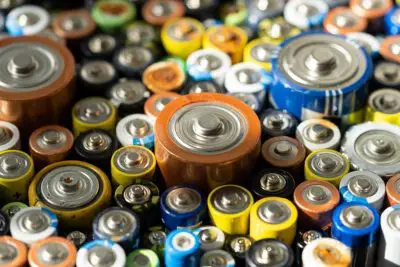Batteries play a crucial role in powering a wide array of electronic devices, from portable gadgets to electric vehicles. One key aspect that defines a battery’s utility is its size, which directly influences its capacity and form factor. Understanding the types of battery sizes is essential for consumers, engineers, and technology enthusiasts alike, as it directly impacts the compatibility and performance of devices.
In this article, we will delve into the diverse world of battery sizes, ranging from the compact and ubiquitous to the large and powerful. So, let us uncover the characteristics, applications, and advancements within the realm of different battery sizes, shedding light on the energy sources that fuel our modern, mobile-centric world.
What are the common sizes for household batteries?

Household batteries come in various sizes and types to power different devices. The most common sizes for household batteries include:
- AAA (Triple-A): Small cylindrical batteries often used in remote controls, digital cameras, and other small electronic devices.
- AA (Double-A): Slightly larger than AAA batteries, AA batteries are widely used in a variety of devices such as toys, flashlights, portable radios, and some small electronic gadgets.
- C: (C-cell): Larger cylindrical batteries commonly used in devices like flashlights, portable radios, and some children’s toys.
- D (D-cell): Even larger than C batteries, D-cell batteries are used in devices that require more power, such as large flashlights, boomboxes, and some electronic toys.
- 9V (Nine-volt): These rectangular batteries are often used in smoke detectors, transistor radios, and various small electronic devices.
- Button or Coin Cells: These small, flat, round batteries are used in devices like watches, hearing aids, calculators, and some small electronic gadgets. Examples include CR2032, LR44, and SR626SW.
It’s important to note that there are different chemistries of batteries, such as alkaline, lithium, nickel-metal hydride (NiMH), and zinc-carbon, which can affect performance and suitability for certain devices. Always check the device’s specifications to ensure you are using the correct type and size of battery.
Are rechargeable batteries available in various sizes?
Yes, rechargeable batteries are available in various sizes to suit different devices. The most common sizes for rechargeable batteries include:
- AAA (Triple-A) Rechargeable Batteries: These are the rechargeable counterparts of standard AAA batteries and are commonly used in devices like remote controls, digital cameras, and other small electronics.
- AA (Double-A) Rechargeable Batteries: Similar to AAA rechargeable batteries, AA rechargeable batteries are widely used in a variety of devices, such as toys, flashlights, and portable electronics.
- C Rechargeable Batteries: Rechargeable versions of C batteries are available for devices that require more power, such as larger flashlights and portable radios.
- D Rechargeable Batteries: Rechargeable D-cell batteries are suitable for devices that demand higher energy, such as large flashlights, boomboxes, and some electronic toys.
- 9V (Nine-volt) Rechargeable Batteries: Rechargeable versions of the 9V battery are used in devices like smoke detectors, transistor radios, and various small electronic gadgets.
- Button or Coin Cell Rechargeable Batteries: Rechargeable versions of button or coin cells are available for devices like watches, hearing aids, and small electronic gadgets.
When using rechargeable batteries, it’s important to consider the specific chemistry of the battery (such as nickel-metal hydride – NiMH or lithium-ion) and to use an appropriate charger designed for the type of rechargeable battery you have. This ensures proper charging and extends the life of the rechargeable batteries.
Which battery size is commonly used in TV remotes?
TV remotes commonly use AAA (Triple-A) batteries. AAA batteries are small and lightweight, making them suitable for compact devices like remote controls. These batteries provide enough power to operate the remote control efficiently and are widely available, making them a convenient choice for many household electronics.
If you’re replacing the batteries in your TV remote, check the device’s specifications or consult the user manual to confirm the required battery size and type.
Button cell batteries, also known as coin cell batteries, come in various sizes, each designated by a specific code. The most common button cell battery sizes include:
- CR2032: This is a popular and widely used button cell battery. It has a diameter of 20mm and a thickness of 3.2mm. CR2032 batteries are commonly found in watches, calculators, and various small electronic devices.
- LR44/AG13/A76: These batteries have a diameter of 11.6mm and a thickness of 5.4mm. They are commonly used in small electronic devices such as watches, thermometers, and certain toys.
- CR2025: With a diameter of 20mm and a thickness of 2.5mm, CR2025 batteries are used in devices like watches, key fobs, and medical devices.
- CR2016: These batteries have a diameter of 20mm and a thickness of 1.6mm. They are used in applications similar to CR2025, such as watches and small electronic gadgets.
- CR1632: With a diameter of 16mm and a thickness of 3.2mm, CR1632 batteries are commonly used in small electronic devices and some car key fobs.
- CR2450: These batteries have a diameter of 24.5mm and a thickness of 5.0mm. They are used in devices that require a higher capacity, such as some remote controls and medical devices.
These are just a few examples, and there are many other button cell battery sizes available, each designed for specific applications. When replacing a button cell battery, it’s important to use the correct size and type specified by the device’s manufacturer.
Which battery size is typical for cameras?
Cameras often use AA (Double-A) or AAA (Triple-A) batteries, depending on the size and power requirements of the camera. However, it’s important to note that many digital cameras, especially those with higher power demands, often use rechargeable lithium-ion batteries or proprietary rechargeable battery packs designed specifically for the camera model.
Here’s a breakdown:
- AA Batteries: Some digital cameras, especially point-and-shoot models or older models, may use AA batteries. AA batteries are versatile and widely available, making them convenient for users who may need to replace batteries while on the go.
- AAA Batteries: Less common in digital cameras, AAA batteries may be used in smaller or more compact cameras where space is a premium. Again, this is more typical in older or simpler camera models.
- Rechargeable Lithium-ion Batteries: Many digital cameras, especially more advanced point-and-shoot cameras and DSLRs, use rechargeable lithium-ion batteries. These batteries are designed specifically for the camera model and provide higher energy density, allowing for longer usage between charges.
- Proprietary Battery Packs: Some cameras, especially DSLRs and mirrorless cameras, use proprietary rechargeable battery packs designed by the camera manufacturer. These packs are specific to the camera model and often offer higher capacity and performance compared to standard AA or AAA batteries.
When choosing a camera or looking to replace the batteries, it’s crucial to check the camera’s specifications and user manual to determine the recommended battery type and size. Always use the batteries recommended by the camera manufacturer for optimal performance.
What size batteries do most electronic gadgets use?

The size of batteries used in electronic gadgets can vary widely depending on the specific gadget and its power requirements. However, some common battery sizes are frequently used across a range of electronic devices. These include:
- AAA (Triple-A): Small and commonly used in a variety of compact electronic gadgets such as remote controls, digital cameras, and small flashlights.
- AA (Double-A): Slightly larger than AAA batteries, AA batteries are versatile and used in a wide range of electronic devices, including toys, flashlights, portable radios, and other small gadgets.
- Button or Coin Cell Batteries: These small, flat, round batteries are used in devices like watches, hearing aids, calculators, and various small electronic gadgets. Common sizes include CR2032, LR44, and SR626SW.
- Rechargeable Batteries: Rechargeable batteries, such as AAA and AA rechargeable batteries, are also commonly used in many electronic gadgets to reduce environmental impact and operating costs.
- Lithium Batteries: For devices that require longer battery life and higher performance, lithium batteries in various sizes (including coin cell sizes like CR2032) are often used.
When selecting batteries for electronic gadgets, it’s crucial to check the device’s specifications or user manual to ensure you are using the correct size and type of battery.
Additionally, advancements in technology have led to more devices using rechargeable batteries or built-in rechargeable battery packs. Always follow the manufacturer’s recommendations for the best performance and safety.
Conclusion
On this page, you will learn about he types of battery sizes to help you know the right one to choose. Batteries come in various sizes to accommodate the diverse power needs of electronic devices. Common sizes include AAA and AA batteries, widely used in small gadgets and household items.
Button or coin cell batteries are prevalent in watches and hearing aids. Rechargeable batteries, available in AAA, AA, and other sizes, offer an eco-friendly alternative.
Proprietary rechargeable packs and lithium batteries cater to the specific requirements of advanced electronic devices. Always refer to the device’s specifications for the recommended battery size and type to ensure optimal performance.


